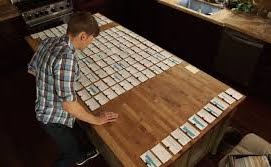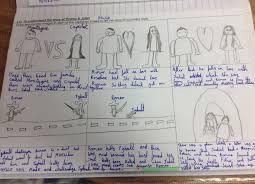Powered by: Richstars entertainment productions
*The cost of actors, location spots and editing equipment.
*Advertising your project, buying new equipment, hiring paid
actors.
*The cost of filming and editing equipment.
Part Two of Five:
 Dream up a visual story. Because most
movies are essentially visual stories, the first step is coming up with an idea
that you want to turn into a movie. What's something that you'll have to see to
believe? You don't have to have every detail in place, but you should have a
basic idea of the premise. •Think about the movies you like to watch, or the
books you like to read, and consider what makes them so interesting. Is it the
characters, the action, the visuals, or the theme? Whatever it is, keep that
element in mind as you plan your movie.
Dream up a visual story. Because most
movies are essentially visual stories, the first step is coming up with an idea
that you want to turn into a movie. What's something that you'll have to see to
believe? You don't have to have every detail in place, but you should have a
basic idea of the premise. •Think about the movies you like to watch, or the
books you like to read, and consider what makes them so interesting. Is it the
characters, the action, the visuals, or the theme? Whatever it is, keep that
element in mind as you plan your movie.
•Write out a list of all the props, locations and actors
which are currently available locally then develop a film around this. Keep a
dream journal, dreams like films are visual stories and dreams. Keep a notebook
with you for writing ideas down. Read the news stories in the papers. Have a
basic idea, and work with that. Narrow it down as you go along while writing
the plot.
STEP: 2
 Expand your idea into a story. The
essentials for building a story from your idea have to do with character. Who
is your protagonist? What does your protagonist want? What keeps them from
getting it? How will the protagonist be changed? If you can answer all these
questions, you're on your way to a great story. •It's been said that all
stories have one of two basic premises: A stranger arrives and shakes up the
normal way of things, or a hero departs and goes on a journey.[5]
Expand your idea into a story. The
essentials for building a story from your idea have to do with character. Who
is your protagonist? What does your protagonist want? What keeps them from
getting it? How will the protagonist be changed? If you can answer all these
questions, you're on your way to a great story. •It's been said that all
stories have one of two basic premises: A stranger arrives and shakes up the
normal way of things, or a hero departs and goes on a journey.[5]
 Expand your idea into a story. The
essentials for building a story from your idea have to do with character. Who
is your protagonist? What does your protagonist want? What keeps them from
getting it? How will the protagonist be changed? If you can answer all these
questions, you're on your way to a great story. •It's been said that all
stories have one of two basic premises: A stranger arrives and shakes up the
normal way of things, or a hero departs and goes on a journey.[5]
Expand your idea into a story. The
essentials for building a story from your idea have to do with character. Who
is your protagonist? What does your protagonist want? What keeps them from
getting it? How will the protagonist be changed? If you can answer all these
questions, you're on your way to a great story. •It's been said that all
stories have one of two basic premises: A stranger arrives and shakes up the
normal way of things, or a hero departs and goes on a journey.[5]
•Make sure your story has a beginning, in which the scenario
and the characters are introduced, a middle, in which the conflict builds, and
an ending, in which the conflict is resolved.
•Most stories have exciting points that make it awesome.
However, too many can spoil the play.
STEP: 3
 write a screenplay. A screenplay
breaks every moment of the story into an individual, film-able scene. While it
may be tempting to want to costume-up and start filming every scene as it
comes, you'll be in much better shape if you can plan things out before hand
and think of your film scene-by-scene. •A screenplay writes out all the dialog,
attributed to each character, along with some physical directions, exposition,
and camera movement. Each scene should start with a brief description of the
scene (i.e. Interior, night).[6]
write a screenplay. A screenplay
breaks every moment of the story into an individual, film-able scene. While it
may be tempting to want to costume-up and start filming every scene as it
comes, you'll be in much better shape if you can plan things out before hand
and think of your film scene-by-scene. •A screenplay writes out all the dialog,
attributed to each character, along with some physical directions, exposition,
and camera movement. Each scene should start with a brief description of the
scene (i.e. Interior, night).[6]
 write a screenplay. A screenplay
breaks every moment of the story into an individual, film-able scene. While it
may be tempting to want to costume-up and start filming every scene as it
comes, you'll be in much better shape if you can plan things out before hand
and think of your film scene-by-scene. •A screenplay writes out all the dialog,
attributed to each character, along with some physical directions, exposition,
and camera movement. Each scene should start with a brief description of the
scene (i.e. Interior, night).[6]
write a screenplay. A screenplay
breaks every moment of the story into an individual, film-able scene. While it
may be tempting to want to costume-up and start filming every scene as it
comes, you'll be in much better shape if you can plan things out before hand
and think of your film scene-by-scene. •A screenplay writes out all the dialog,
attributed to each character, along with some physical directions, exposition,
and camera movement. Each scene should start with a brief description of the
scene (i.e. Interior, night).[6]
•Think cheaply as you write. For your purposes, it may be
much better for the story to cut out the epic 30 minute car chase and instead
cut straight to the aftermath. Maybe your lead protagonist is laid up in bed,
bandaged, wondering, "What happened?"
STEP: 4
 Storyboard your film. A storyboard is
a comic-book-like version of the film that you'll create, but without the
dialog bubbles. It can be done on a large scale, drawing only each major scene
or transition, or, if you've got a very visual story, It can also be done at
the micro level, planning every shot and camera angle. •This process makes a
long film go more smoothly, and will help you anticipate difficult scenes or
sequences to film. You can try shooting without storyboarding, but it will not
only help you visualize your movie, it will help you explain your vision to the
other members of the crew.
Storyboard your film. A storyboard is
a comic-book-like version of the film that you'll create, but without the
dialog bubbles. It can be done on a large scale, drawing only each major scene
or transition, or, if you've got a very visual story, It can also be done at
the micro level, planning every shot and camera angle. •This process makes a
long film go more smoothly, and will help you anticipate difficult scenes or
sequences to film. You can try shooting without storyboarding, but it will not
only help you visualize your movie, it will help you explain your vision to the
other members of the crew.
 Storyboard your film. A storyboard is
a comic-book-like version of the film that you'll create, but without the
dialog bubbles. It can be done on a large scale, drawing only each major scene
or transition, or, if you've got a very visual story, It can also be done at
the micro level, planning every shot and camera angle. •This process makes a
long film go more smoothly, and will help you anticipate difficult scenes or
sequences to film. You can try shooting without storyboarding, but it will not
only help you visualize your movie, it will help you explain your vision to the
other members of the crew.
Storyboard your film. A storyboard is
a comic-book-like version of the film that you'll create, but without the
dialog bubbles. It can be done on a large scale, drawing only each major scene
or transition, or, if you've got a very visual story, It can also be done at
the micro level, planning every shot and camera angle. •This process makes a
long film go more smoothly, and will help you anticipate difficult scenes or
sequences to film. You can try shooting without storyboarding, but it will not
only help you visualize your movie, it will help you explain your vision to the
other members of the crew.



No comments:
Post a Comment